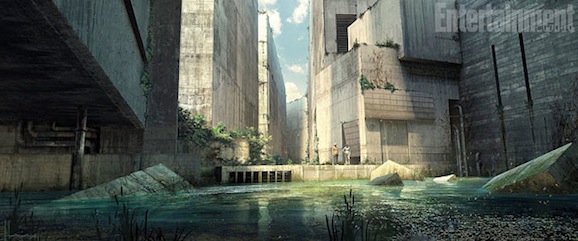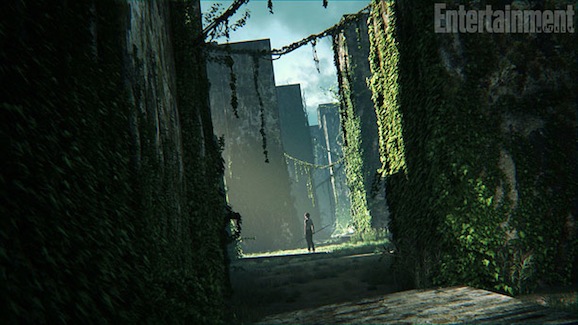The Maze Runner: How Wes Ball Built The Perfect Maze On A Budget
This article is more than 2 years old
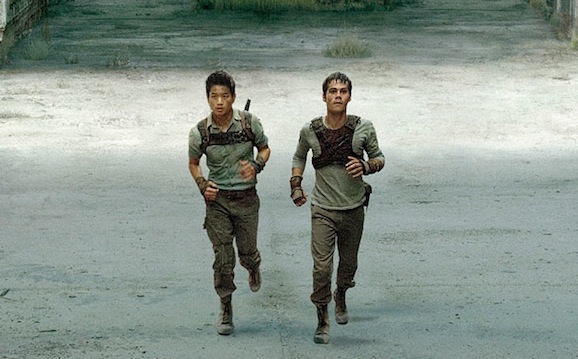 If you’re making a movie called The Maze Runner you damn sure better have an impressive maze, unless, you know, the maze is a metaphor for some sticky situation, like a tricky interpersonal relationship or an international espionage kind of situation. But thankfully in Wes Ball’s The Maze Runner an adaptation of James Dashner’s best selling young adult novel, we’re talking about a very real maze, and the production went to great lengths to create the perfect one.
If you’re making a movie called The Maze Runner you damn sure better have an impressive maze, unless, you know, the maze is a metaphor for some sticky situation, like a tricky interpersonal relationship or an international espionage kind of situation. But thankfully in Wes Ball’s The Maze Runner an adaptation of James Dashner’s best selling young adult novel, we’re talking about a very real maze, and the production went to great lengths to create the perfect one.
The Maze Runner puts a Lord of the Flies twist on the popular dystopian teen YA genre. There’s a mysterious place called the Glade, populated by teenage boys who don’t know who they are, where they came from, or how they got here. Giant walls pen them in and open up every morning to reveal a sprawling, ever-changing maze, which holds they key to their escape. Every night the walls close up again, and you don’t want to be caught out there because it’s in the darkness that the monstrous Grievers come out to play. And they don’t play nice. When a new arrival, Thomas (Dylan O’Brien, Teen Wolf), shows up on the scene, things start to get all kinds of hectic.
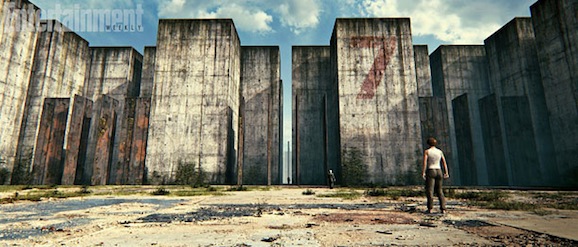 As you can tell, the titular puzzle plays an important role and you need to get it right, but considering that The Maze Runner doesn’t have the massive budget that some of its contemporaries have, you need to be smart with your resources. Ball and company had to be smart when it came to translating Dashner’s vision to the screen.
As you can tell, the titular puzzle plays an important role and you need to get it right, but considering that The Maze Runner doesn’t have the massive budget that some of its contemporaries have, you need to be smart with your resources. Ball and company had to be smart when it came to translating Dashner’s vision to the screen.
Ball started by drawing a schematic of the entire maze. As you can see in this picture, the square Glade is in the middle, and the passages are tighter the closer you are to the middle, while they get wider and wider the further you go. This is actually a bit different than how the book describes it. Ball tells EW, “James had described it as basically a bunch of boxes arranged like a square…I had this idea that I thought was really cool of almost mirroring a clock that would essentially count down.”
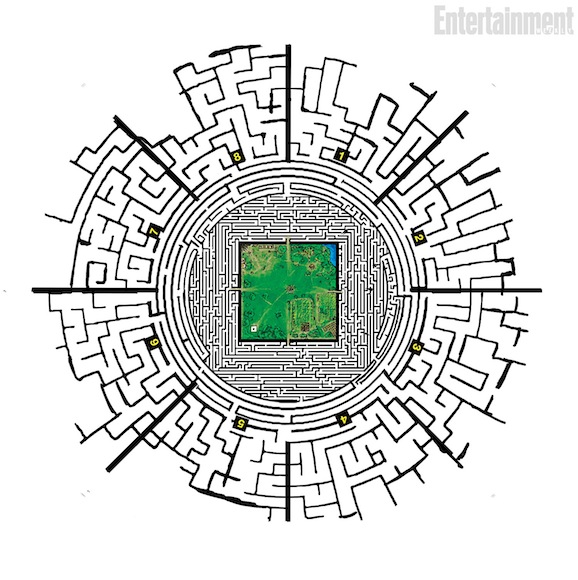 As fantastic as this scenario is, Ball wanted to make it as realistic as possible, to ground the structure in reality. In the design of the walls, the film also differs from Dashner’s book. As written they’re 400 feet tall, but when Ball started setting up the film, he discovered that at that size they were impossible to fit in the frame and you would wind up looking at nothing but slabs of concrete, which makes for a visually dull movie. So they scaled them back a bit, so what you see onscreen is roughly 100 to 150 feet, which is still enough to make you feel like you’re in a prison, but provides a cinematic element as well.
As fantastic as this scenario is, Ball wanted to make it as realistic as possible, to ground the structure in reality. In the design of the walls, the film also differs from Dashner’s book. As written they’re 400 feet tall, but when Ball started setting up the film, he discovered that at that size they were impossible to fit in the frame and you would wind up looking at nothing but slabs of concrete, which makes for a visually dull movie. So they scaled them back a bit, so what you see onscreen is roughly 100 to 150 feet, which is still enough to make you feel like you’re in a prison, but provides a cinematic element as well.
Ball says:
I wanted to make sure we had lots of different flavors of maze…everything’s very organic and overgrown and concrete; then it starts to become a little more metal and you feel like you’re seeing the mechanics of the maze itself. Then you get further out to the edges and you really find the sci-fi of the maze…It’s like a machine they’re entering in to.
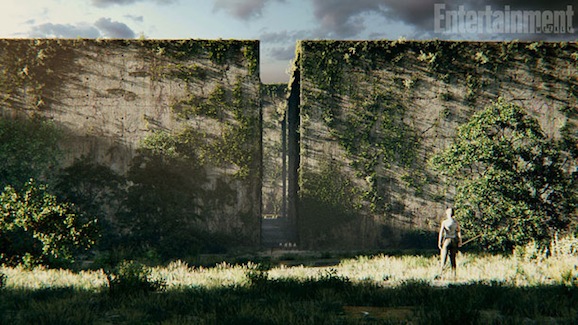 As much as possible, The Maze Runner filmed on location and eschewed green screen and special effects. With a movie like this you can’t escape that entirely, but Ball tried to do what he could to ground the film in reality. The Glade is a field in Baton Rouge, Louisiana, and all the buildings are real and were constructed for the film. Many of the walls are the actual concrete walls of what used to be a hotel. They were even able to construct a limited portion of the maze, and within these confines, Ball, a first time feature director, played with things like camera angles and placement in order to give these scenes a much more expansive, extensive feel.
As much as possible, The Maze Runner filmed on location and eschewed green screen and special effects. With a movie like this you can’t escape that entirely, but Ball tried to do what he could to ground the film in reality. The Glade is a field in Baton Rouge, Louisiana, and all the buildings are real and were constructed for the film. Many of the walls are the actual concrete walls of what used to be a hotel. They were even able to construct a limited portion of the maze, and within these confines, Ball, a first time feature director, played with things like camera angles and placement in order to give these scenes a much more expansive, extensive feel.
The Maze Runner opens everywhere September 19.
